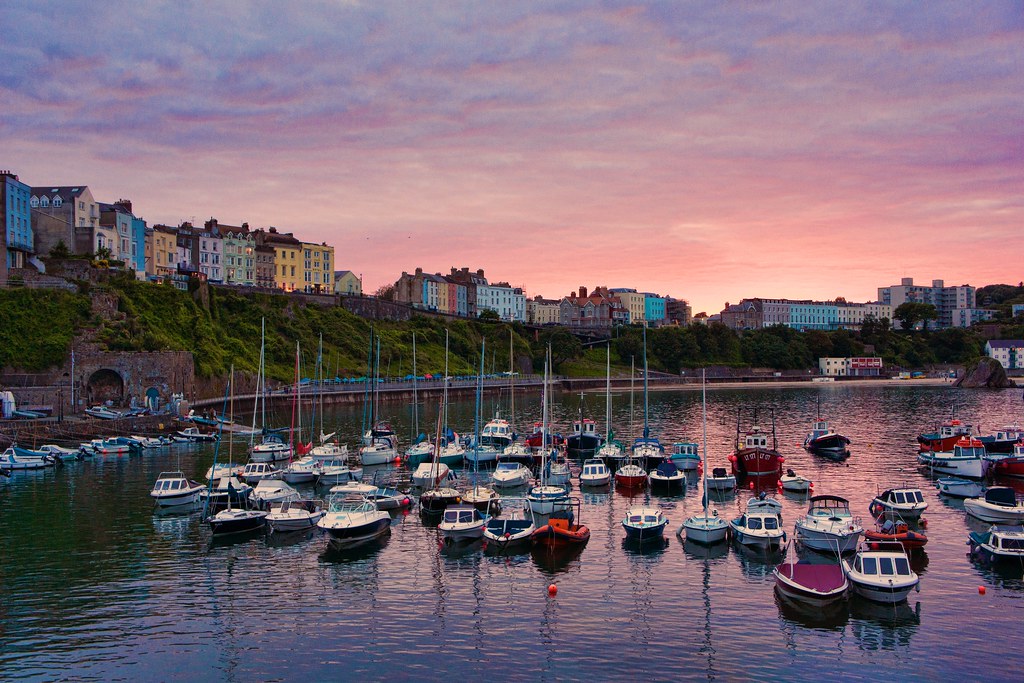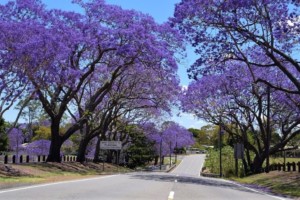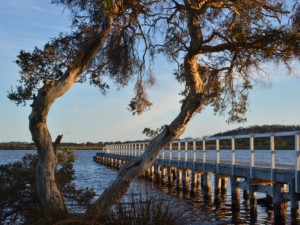Good news in tourism January 12 – 18, 2020

The travel & tourism industry is not to blame for all the world’s problems, but it can and should and does assume some responsibility for them. And often helps solves them. That is why you should read “Good news in tourism” and share it with your colleagues and friends. Published on Sunday to be ready on Monday, “Good news in tourism” is the perfect pick-me-up for the start of a working week. And go!
Important “GT” stuff first in case you missed it during the week:
“The best way to support Australia, Australian communities, and the tourism sector is to keep visiting,” says Tourism Australia on its bushfire information resources web page. “If you cannot travel to an affected area due to bushfires, one of the many ways to help includes rescheduling instead of canceling …” Check out “GT’s” unique take on why it is appropriate that Australia has announced itself open for tourism business and why even fire-affected places may be worth a visit.
Upon publishing this post, 32 tourism organisations and five individuals had declared a climate emergency on behalf of Earth’s multi-trillion dollar travel & tourism industry. (For an “emergency” it is all very relaxed.) While The “Good Tourism” Blog greatly respects the Tourism Declares Climate Emergency initiative and its signatories — and deems the story “good news” — “GT” won’t be joining them in making such a declaration.
Other good news in tourism, in no particular order:
Tourism & wildlife & ecotourism
In an interview with Deccan Chronicle, renowned biologist Dr George Schaller, who inspired Dian Fossey, suggested that India should do with its tiger-related tourism what Rwanda is doing with its gorilla-related tourism. “Most of the money earned from the gorillas is given back to the community by way of spending on health services, schools and hiring staff to monitor them. As a result, local people are for gorillas and they help in tackling poaching. Most other countries make money from such ventures but give back nothing.”
Tourism is a natural ally of efforts to “rewild” abandoned rural areas in Europe, including in Portugal’s Greater Côa Valley where “plans are afoot to reintroduce wild horses, roe deer and Iberian ibex”.
China-based British conservationist Terry Townshend, on bringing tourism to snow leopard country, writes: “The community-based approach in Angsai has value not only for the local community but also to other communities around the country. It offers evidence that what’s good for locals and tourists can also be good for wildlife.”
Cambodia’s Ministry of Environment is studying a site in Mondulkiri province filled with thousands of natural stone columns. Officials reportedly found “a rich diversity of flora and fauna” there too so it is hoped a new “eco-tourism and heritage conservation area” will emerge.
In the USA, Citrus County, Florida’s local paper the Chronicle reckons the members of the Manatee Eco Tourism Association (META) are among “the most responsible tour operators in Citrus County”. However, as tourism grows it is becoming more challenging to regulate human/manatee interaction.
Conservationists and butterfly experts hope the decision of India’s Arunachal Pradesh state to declare the Kaiser-i-Hind (Emperor of India) its official butterfly will help save the species from extinction through tourism. Teinopalpus imperialis is also found in Nepal, Bhutan, Myanmar, southern China, Vietnam,and Laos.
Cultural heritage tourism
A bill to study if an emancipation trail should receive a national designation is on its way to USA President Donald Trump’s desk. The 51-mile (82-kilometre) trail in southeast Texas would trace the route taken by newly freed slaves in the 19th century. Naomi Mitchell Carrier, founder of the Texas Center for African American Living History in Houston, researched and documented more than 40 sites “between Reedy Chapel in Galveston and Freedmen’s Town in Houston”.
Silver linings in the land of the long white cloud, New Zealand. An incident last month involving a cruiseliner’s crew giving a mock pōwhiri (Māori welcome) to tourists as they entered Tauranga has highlighted the need for more Māori cultural offerings for visitors. Several new businesses in the Bay of Plenty town are now vying to fill the gap. And relations between iwi (the Māori people or nation) and cruise ship operators have been improving, according to a tour operator. Chris Flynn of “GT” Insight Partner the World Tourism Association for Culture & Heritage said that while the original incident “shocked and appalled residents … it also provided the shot in the arm needed to bring about positive change”.
In Queensland, Australia, 2020 is the “Year of Indigenous Tourism” and the state government has launched a new AUD 10 million (USD 6.9 million) Indigenous tourism fund. The fund will “support new, unique and innovative Indigenous tourism products and experiences in Queensland, particularly in regional areas,” Tourism Minister Kate Jones said. A dedicated Indigenous Tourism Development Service will be set up.
In South Australia, Ramindjeri elder Mark Koolmatrie reckons all races can work as one to promote Indigenous storytelling. Mr Koolmatrie is seeking funding from state and federal governments to set up audio-trails around the Fleurieu Peninsula. He will then set his sites on Kangaroo Island.
Scotland’s national bard Robert Burns, who is credited with the New Year ditty “Auld Lang Syne”, is worth GBP 203 million (USD 264 million) a year to the Scottish economy, according to a University of Glasgow report. Cultural heritage tourism in Scotland attracts more visitors than anywhere in the UK outside London. And Robert Burns Birthplace Museum in Alloway is second only to Shakespeare among the UK’s writer-related museums.
The Murshidabad Heritage Development Society in West Bengal state, India will host the three-day Murshidabad Heritage Festival in January to showcase the city’s food, art, culture, and heritage. The Society, which oversaw the restoration of 10 heritage buildings in Murshidabad, hopes the event will put “the capital of undivided Bengal” back onto the cultural heritage tourism map.
Decentralised decision-making
Tour operators in southern Thailand are reportedly keen on keeping up with global trends while preserving local resources. Said one: “Sustainable tourism combined with community-based tourism could be a remedy for overcrowded beaches and help local stakeholders enjoy tourism’s benefits while keeping natural resources less disturbed.”
A blueprint for the new decade will see the tourism industry in Edinburgh, Scotland shift from “driving growth to managing growth” so as to “put people, place and planet first” and to ensure that it is seen by residents as “a benefit, not a burden”. The “radical rethink” will give residents more say.
Pembrokeshire in Wales has launched a new five-year tourism strategy, courtesy of the Destination Pembrokeshire Partnership (DPP). The DPP comprises Pembrokeshire Tourism, Pembrokeshire County Council, PLANED, and the Pembrokeshire Coast National Park Authority.
Sedona, Arizona, USA has launched ‘The End of Tourism As We Know It’, a sustainable tourism plan that the Sedona Chamber of Commerce developed along with the City of Sedona, Nichols Tourism Group, Arizona State University’s Center for Sustainable Tourism, and a local advisory group.
Firms in Scotland’s northeastern Moray district have voted for the creation of a new tourism organisation, a “Tourism Business Improvement District”, to be funded by an annual levy paid by tourism-related businesses. Ballot papers with the proposal were sent out in December after it came to light that Moray Speyside Tourism would be defunded.
Centralised control
During its presidency of the Council of the European Union (EU), Croatia will push the line that “tourism should assume a more conspicuous part in European policies and institutions”. The Republic will also propose “the development of a European tourist brand” and call for cooperation in promoting the development of sustainable and responsible tourism, particularly in coastal and island communities.
Croatia will hold the presidency for only six months until June 2020 after which another member state will take over for six months. The Council of the EU is the upper house of the EU legislature. It’s musical chairs up there!
With a budget of IDR 11 trillion (USD 806 million), Indonesia’s Ministry of Tourism and Creative Economy is accelerating the development of tourism infrastructure in five “super-priority destinations”: Borobudur (Central Java), Lake Toba (North Sumatera), Mandalika (West Nusa Tenggara), Labuan Bajo (East Nusa Tenggara), and Likupang (North Sulawesi).
Philippines government officials have announced that Baguio City in Northern Luzon province will remain open to tourists while rehabilitation works get underway on several tourist attractions, including Burnham Park, Mines View Park, and the city market. Of course closing down a city of more than 300,000 people would have been quite a trick!
Greece’s tourism ministry will organise a working group to create a national observatory for sustainable tourism development.
Odds & ends
Newsy bits that don’t easily fit into this week’s arbitrary clusters:
Innovative experiences that could make your next trip to Netherlands’ capital city of Amsterdam “a more sustainable affair”.
Featured image: Tenby Harbour, Pembrokeshire, Wales by Richardjo53 (CC BY-SA 2.0) via Flickr.
PS: None of the items above have been fact-checked by “GT”. All terminology used here is as the linked sources used it according the knowledge and assumptions they have about it. Please comment below if you know there has been buzzword-washing or blatant nonsense relayed here, but be nice about it as the linked sources might get offended. (“GT” won’t.) And as for “GT” bringing it to your attention so that you might set the record straight, you are welcome! 🙂
PPS: It is “GT’s” policy to fully disclose sponsored content. If an item is not disclosed as sponsored then it will have caught “GT’s” attention by some other more organic means. Partner with “GT”. You know you want to.





